
| (Formerly known as Parallelia solomonensis) EREBINAE, EREBIDAE, NOCTUOIDEA | (donherbisonevans@yahoo.com) and Stella Crossley |
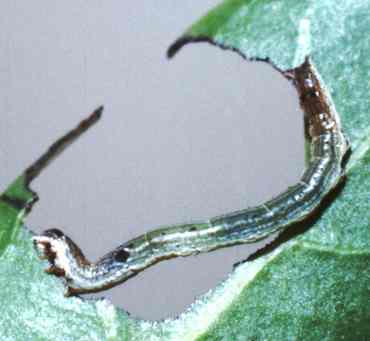
early instar, magnified
(Photo: Don Herbison-Evans, Bundaberg, Queensland)

| (Formerly known as Parallelia solomonensis) EREBINAE, EREBIDAE, NOCTUOIDEA | (donherbisonevans@yahoo.com) and Stella Crossley |

early instar, magnified
(Photo: Don Herbison-Evans, Bundaberg, Queensland)
The early instars of this Caterpillar are contortionists. They are inclined to rest lying along the edge of a leaf. even if that edge is concave.
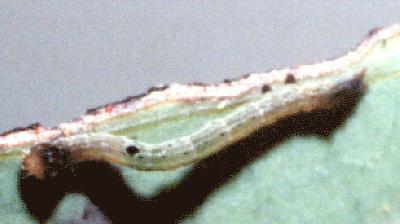
The early instars are a translucent pale green with a black spot each side of the second abdominal segment, and a pale brown head. The first pair of prolegs is underdeveloped, so that it moves in a looper fashion.
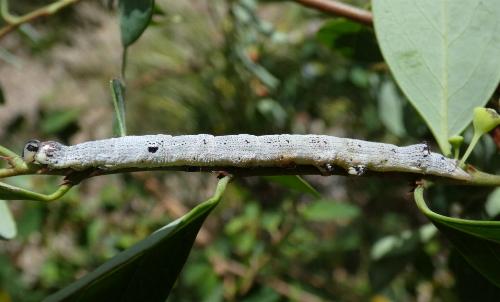
Later, the caterpillar becomes grey, with a pair of short horns on the penultimate segment, but still with the black spots on the second abdominal segment. The last instar loses the black spots.
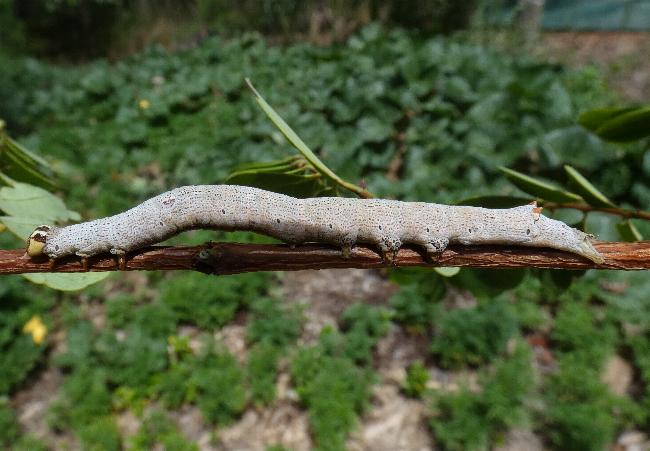
The later instars like to rest by day, lying along a stem of their foodplant. The caterpillar has been found on
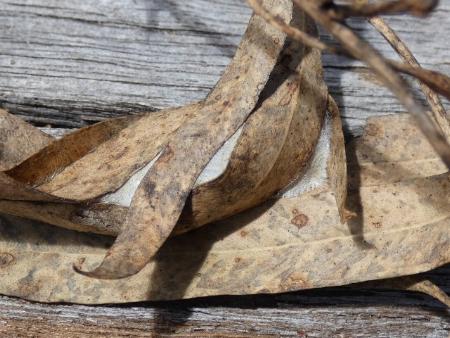
The pupa is formed in a cocoon in between joined leaves.

The adult moth is light and dark brown in a pattern on the forewings that resembles distinctive eye and eyebrow markings.
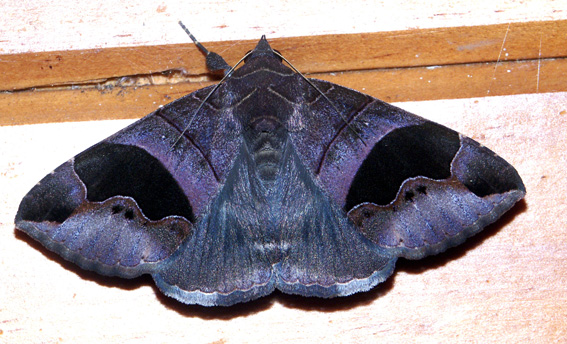
The markings are much less striking in a set specimen. The moths have a wingspan of about 6 cms.
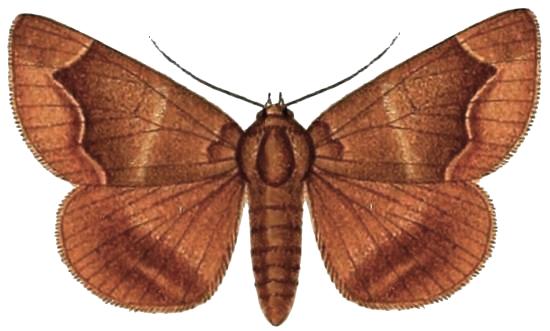
The species has been found in Australasia, including
The subspecies papuana (Holloway, 1979) is found in Australia in
Further reading :
Ian F.B. Common,
Moths of Australia,
Melbourne University Press, 1990, fig. 46.7, 55.8, p. 453.
George F. Hampson,
Catalogue of the Noctuidae in the Collection of the British Museum,
Catalogue of the Lepidoptera Phalaenae in the British Museum,
Volume 12 (1913), p. 572, No. 7712, and also
Plate CCXXII, figure 2.
Buck Richardson,
Tropical Queensland Wildlife from Dusk to Dawn Science and Art,
LeapFrogOz, Kuranda, 2015, p. 129.
 caterpillar |  butterflies |  Lepidoptera |  moths |  caterpillar |
(updated 3 January 2013, 30 October 2025)